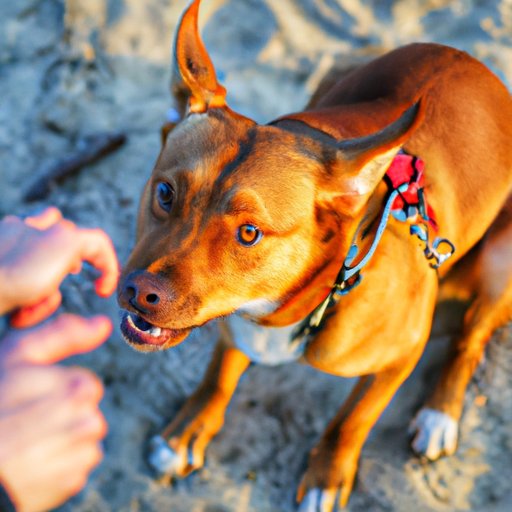I. Introduction
Dogs are known for their expressive faces and body language, and one of the most noticeable aspects of their body language is their ears. Have you ever wondered why your dog puts their ears back in certain situations, or what that ear movement might mean? In this article, we will explore the reasons why dogs put their ears back and provide tips for pet owners to interpret dog ear language.
II. Understanding the Physiological Behavior of Dogs: Why Do They Put their Ears Back?
Dog ears are fascinating structures that serve several important functions. The ears are made up of muscles, cartilage, and skin, and they are able to move in various directions, allowing dogs to hear sounds from different locations. Dogs can rotate their ears up to 180 degrees, enabling them to detect sounds from behind or below them. Additionally, dogs’ ears play a role in maintaining balance, regulating temperature, and protecting the ear canal from dirt and debris.
So, why do dogs put their ears back? There are several reasons. One of the most common reasons is to regulate temperature. Dogs don’t sweat like humans do, so they rely on panting and other cooling mechanisms to avoid overheating. When they put their ears back, it can help cool the blood vessels inside their ears, which in turn cools their body.
Another reason dogs put their ears back is to signal submission. When a dog tucks their ears back against their head, it can be a sign that they are feeling anxious or fearful, and they are trying to communicate to other dogs or people that they are not a threat.
Finally, dogs may put their ears back to protect them. If a dog is in a dangerous or unpredictable situation, they may tuck their ears back to prevent them from being bitten or injured.
III. Decoding Your Dog’s Body Language: The Significance of Ear Positioning
Ear positioning is an important part of canine body language, and different positions can signal different things. For example, forward ears are a sign of interest or excitement, while backward ears can indicate fear or aggression. Sideways ears can signal relaxation, and flat ears against the head can be a sign of submission or distress.
It’s important to pay attention to your dog’s entire body language, not just their ears, in order to interpret their signals accurately. For example, if your dog’s ears are back and their tail is also tucked, it’s a sign that they are feeling fearful or anxious. However, if their ears are back and their tail is wagging, it may mean they are feeling submissive or appeasing.
IV. Canine Psychology: The Reasons Behind Dogs Tucking Their Ears Back
Understanding why dogs put their ears back is not just a matter of physiology, but also of psychology. Dogs process information and emotions through their senses, and their ears play a crucial role in this process. If a dog is feeling stressed, anxious, or afraid, they may tuck their ears back as a way to cope with their emotions.
If your dog is frequently tucking their ears back, it could be a sign of an underlying behavioral or health issue. For example, they may be experiencing separation anxiety, or they could have an ear infection that is causing them discomfort. It’s important to address these issues and provide your dog with the necessary care and training to help them overcome their fears and become more comfortable in different situations.
V. The Role of Breed-Specific Traits in Dog Ear Movements
Not all dogs have the same kind of ears, and breed-specific traits can play a part in determining how dogs use their ears to communicate. For example, breeds with floppy or pendulous ears, such as Basset Hounds or Bloodhounds, may have a harder time moving their ears and relying more on other forms of body language to communicate.
On the other hand, breeds with erect or pricked ears, such as German Shepherds or Siberian Huskies, may use their ears more extensively to signal their intentions and emotions. It’s important for pet owners to understand these breed-specific traits and how they affect their dogs’ behavior and communication style.
VI. The Do’s and Don’ts of Interpreting Dog Ear Language: Tips for Pet Owners
Here are some do’s and don’ts for pet owners to keep in mind when interpreting their dogs’ ear language:
- Do observe your dog’s entire body language, not just their ears.
- Don’t punish your dog for displaying submissive or fearful behavior.
- Do reward positive behavior, such as relaxed ears or appropriate use of ear language.
- Don’t assume that all dogs use their ears in the same way.
- Do seek professional help if your dog’s ear movements are causing problems or concerns.
VII. Conclusion
Your dog’s ear language can tell you a lot about how they are feeling and what they need. It’s important to understand the physiological, psychological, and breed-specific factors that contribute to ear movements, as well as to read your dog’s entire body language to accurately interpret their signals. By paying close attention to your dog’s ears and providing them with the care and training they need, you can strengthen your bond with your furry friend and ensure their well-being.
